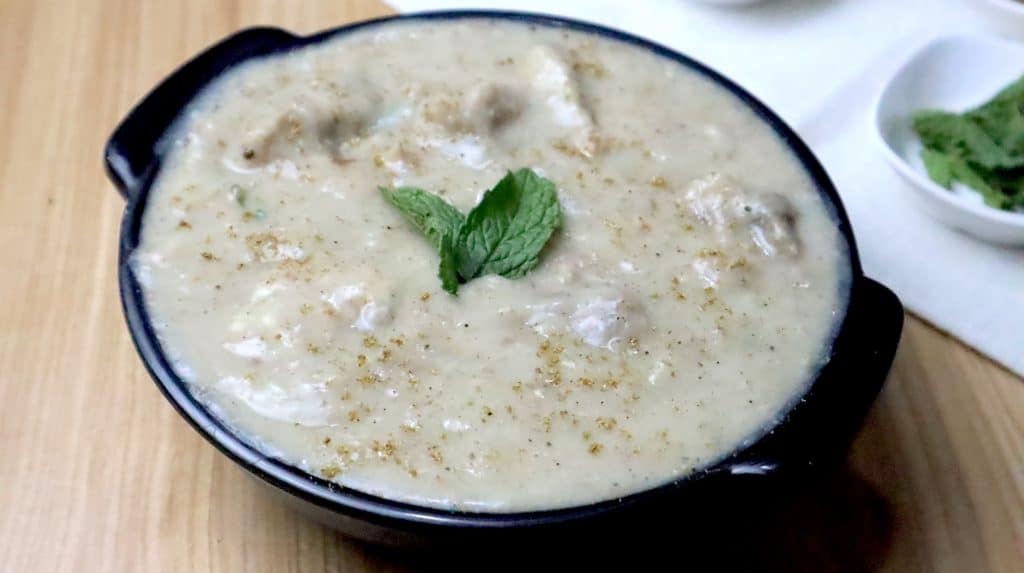Harees Recipe: Harees, a traditional Middle Eastern dish with roots dating back centuries, holds a special place in the hearts and palates of many. This wholesome and hearty porridge-like dish is not just a meal; it’s a culinary journey through time and culture.
In this comprehensive guide, we’ll explore the Harees Recipe, its origins, ingredients, and the step-by-step process of crafting the perfect Harees.

Origins of Harees:
Harees has a rich history that predates the modern era. Originating from the Arabian Peninsula, this dish has been enjoyed by generations, evolving and adapting across different regions. Its roots can be traced back to the Bedouin tribes, where it was traditionally prepared during the holy month of Ramadan. Over time, Harees has transcended cultural boundaries, becoming a beloved dish in various Middle Eastern countries.

Harees Recipe Ingredients:
The key to crafting an authentic Harees lies in selecting the finest ingredients. Here’s a list of what you’ll need:
- Whole Wheat or Barley: Traditionally, Harees is made with whole wheat or barley, lending a robust texture and nutty flavor to the dish.
- Chicken or Meat: While chicken is a popular choice, some variations use lamb or beef. The meat is typically bone-in, contributing to the rich and savory broth.
- Onions: Finely chopped onions add sweetness and depth to the dish.
- Ghee or Clarified Butter: Enhancing the richness of Harees, ghee or clarified butter adds a velvety texture and a hint of nuttiness.
- Spices: A blend of ground cinnamon, cardamom, and a pinch of nutmeg infuses Harees with warm, aromatic notes.
- Salt: To taste, ensuring the perfect balance of flavors.
Harees Recipe: Step-by-Step Cooking Guide
Now, let’s delve into the step-by-step process of creating this delectable dish:
- Soak the Grains: Begin by soaking the whole wheat or barley overnight. This helps soften the grains, reducing cooking time and ensuring a creamy consistency.
- Prepare the Meat: Clean and cut the chicken or meat into bite-sized pieces, leaving the bones intact for a flavorful broth.
- Sauté the Onions: In a large pot, heat ghee or clarified butter and sauté finely chopped onions until golden brown. This forms the flavorful base of the dish.
- Add Spices: Introduce a medley of ground cinnamon, cardamom, and a pinch of nutmeg to the sautéed onions. Allow the spices to bloom, releasing their aromatic essence.
- Incorporate Meat and Grains: Add the prepared meat and soaked grains to the pot. Stir well, ensuring an even distribution of flavors.
- Simmer to Perfection: Pour enough water into the pot to cover the ingredients, bringing the mixture to a gentle boil. Reduce the heat and let it simmer, allowing the grains to break down and the meat to become tender. Stir regularly to prevent sticking.
- Adjust Consistency: As the Harees simmers, monitor the consistency. Add water if needed, aiming for a smooth and porridge-like texture.
- Season to Taste: Sprinkle salt according to your preference, adjusting the seasoning to achieve a harmonious balance of flavors.
- Serve Hot: Once the grains have fully cooked, and the meat is tender, your Harees is ready to be served. Spoon it into bowls, garnish with a drizzle of ghee, and perhaps a sprinkle of cinnamon for an extra touch of warmth.
Conclusion:
Harees Recipe, with its humble ingredients and meticulous preparation, encapsulates the essence of Middle Eastern cuisine. This dish not only nourishes the body but also tells a story of tradition, culture, and shared moments around the dining table. Whether enjoyed during Ramadan or as a comforting meal on a chilly evening, Harees Recipe is a testament to the timelessness of culinary heritage. So, gather your ingredients, embrace the slow-cooking process, and savor the rich flavors of this ancient dish that continues to bring joy to tables across the world.

